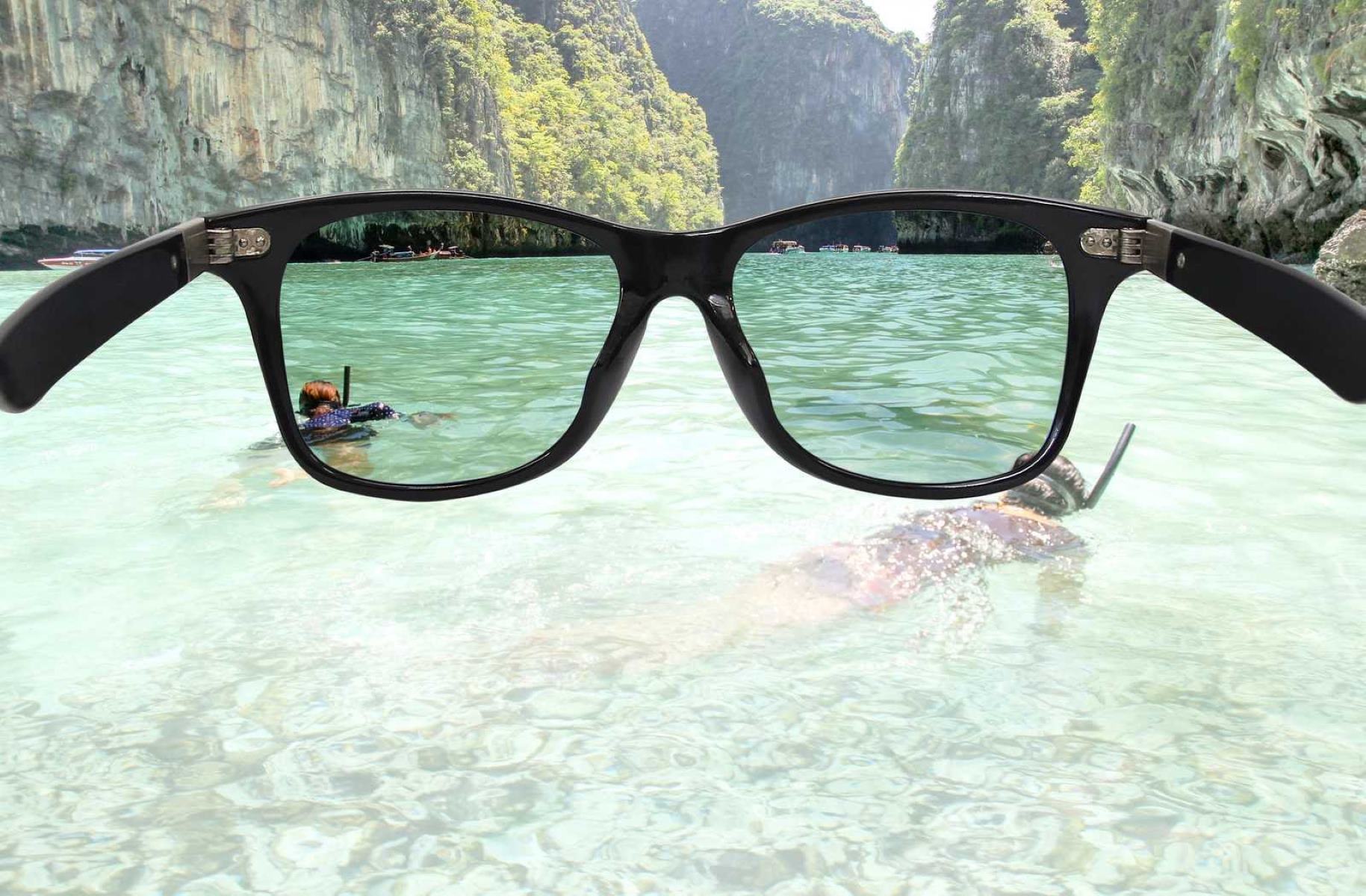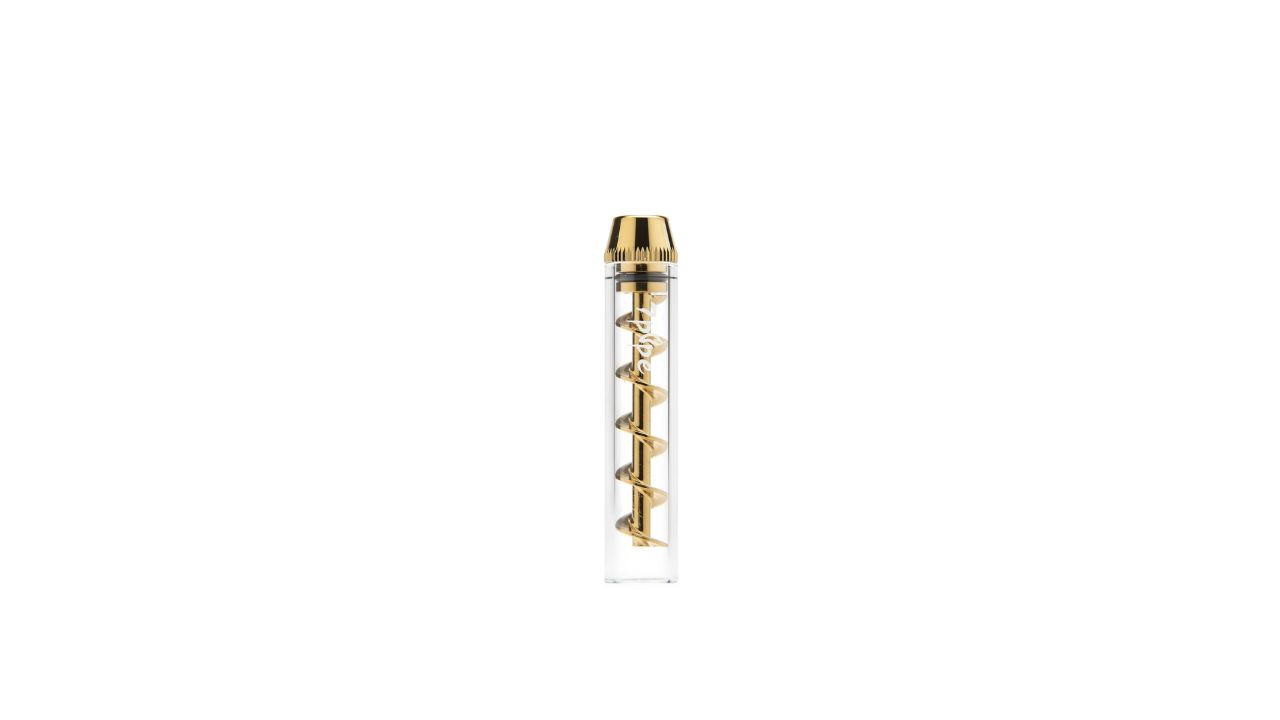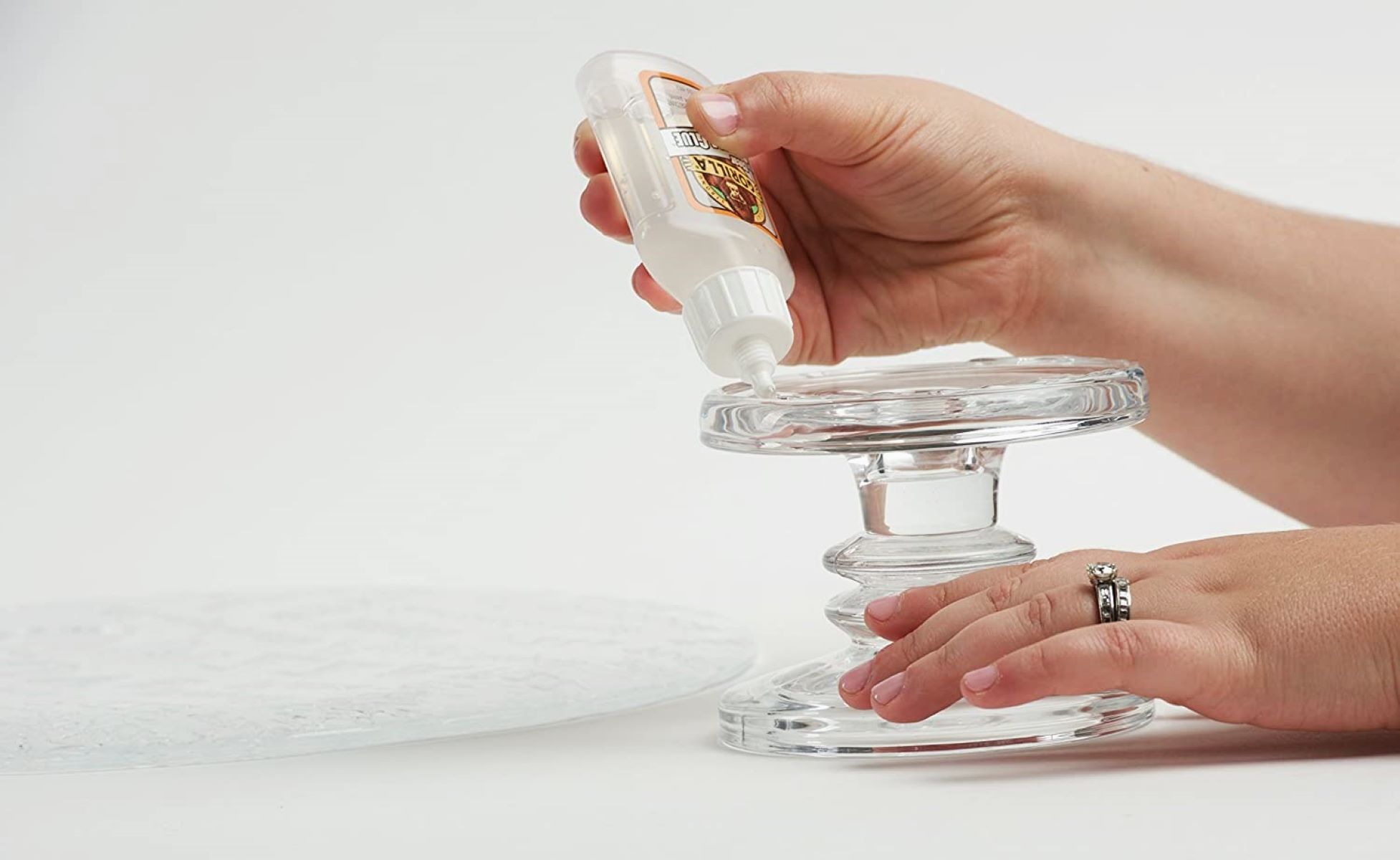Home>Furniture & Design>Interior Design Trends>How Does Polarized Glass Work


Interior Design Trends
How Does Polarized Glass Work
Published: February 7, 2024
Discover how polarized glass enhances interior design trends and learn about its functionality and benefits. Explore the impact of polarized glass on modern interior design.
(Many of the links in this article redirect to a specific reviewed product. Your purchase of these products through affiliate links helps to generate commission for Storables.com, at no extra cost. Learn more)
Introduction
Polarized glass is a remarkable innovation that has revolutionized the way we experience and interact with light. Whether you're driving on a sunny day, fishing by the lake, or simply strolling through the city, polarized glass plays a crucial role in enhancing visual clarity and reducing glare. Understanding the science behind polarized glass and its practical applications can deepen our appreciation for this ingenious technology.
Polarized glass is not just an ordinary material; it is engineered to selectively block certain wavelengths of light while allowing others to pass through. This unique property is achieved through a process called polarization, which involves aligning the light waves in a specific orientation. By doing so, polarized glass effectively filters out the intense, horizontally oriented light waves that cause glare, while permitting the vertically oriented light waves to pass through.
In essence, polarized glass acts as a gatekeeper for light, selectively allowing the most beneficial wavelengths to reach our eyes while minimizing the disruptive effects of glare. This results in a clearer, more comfortable visual experience, especially in bright outdoor environments where glare can be particularly bothersome.
As we delve deeper into the science behind polarized glass, we will uncover the fascinating mechanisms that enable this material to transform how we perceive and interact with light. From unraveling the intricate interplay of light waves to exploring the practical benefits and diverse applications of polarized glass, this exploration promises to shed light on the captivating world of optical innovation.
Key Takeaways:
- Polarized glass reduces glare by filtering out disruptive light waves, enhancing visual clarity and comfort in activities like driving and outdoor sports.
- With its UV protection and versatile applications, polarized glass improves safety and visual experiences across industries, from automotive to photography.
Read more: How Does Privacy Glass Work
The Science Behind Polarized Glass
Polarized glass operates on the principle of light polarization, a phenomenon that occurs when light waves align in a specific orientation. To comprehend the science behind polarized glass, it's essential to grasp the nature of light as an electromagnetic wave. When natural light, which consists of waves oscillating in all directions, encounters a reflective or refractive surface, such as water, glass, or a road surface, the waves become predominantly horizontally oriented. This horizontal alignment results in intense glare, which can be visually discomforting and even hazardous in certain situations.
Polarized glass is engineered to counteract this effect by selectively filtering out horizontally polarized light waves. This is achieved through a process known as polarization, which involves embedding a microscopic film within the glass. This film is composed of molecules aligned in a specific direction, effectively acting as a molecular filter for light waves. When natural light passes through this film, the horizontally oriented waves are absorbed or deflected, while the vertically oriented waves are allowed to pass through relatively unimpeded.
The key to this process lies in the orientation of the polarizing film's molecules. By aligning the molecules in a specific direction, typically vertically, the film effectively blocks the horizontally polarized light waves, which are the primary cause of glare. As a result, the light that reaches our eyes is significantly less affected by glare, leading to improved visual clarity and comfort.
This selective filtering of light waves is what sets polarized glass apart from conventional glass or sunglasses. While regular glass merely attenuates the overall intensity of light, polarized glass specifically targets the problematic horizontally polarized waves, making it a highly effective solution for reducing glare.
Understanding the science behind polarized glass unveils the intricate interplay of light waves and molecular alignment that underpins its remarkable functionality. This knowledge not only fosters a deeper appreciation for the technology but also underscores the ingenuity of leveraging scientific principles to enhance our everyday experiences.
How Polarized Glass Reduces Glare
Polarized glass is engineered to combat the pervasive issue of glare by selectively filtering out horizontally polarized light waves. When natural light reflects off surfaces such as water, roads, or snow, it becomes predominantly horizontally oriented, leading to intense glare. This phenomenon can cause visual discomfort and pose safety hazards, particularly during activities such as driving, fishing, or skiing.
The key to how polarized glass reduces glare lies in its embedded polarizing film, which consists of molecules aligned in a specific orientation. This molecular alignment enables the film to act as a highly effective filter for light waves. When natural light passes through the polarizing film, the horizontally oriented waves, responsible for causing glare, are either absorbed or deflected, while the vertically oriented waves are allowed to pass through relatively unimpeded.
By selectively blocking the horizontally polarized light waves, polarized glass significantly diminishes the intensity of glare that reaches our eyes. This results in a clearer, more comfortable visual experience, especially in bright outdoor environments where glare can be particularly bothersome. Whether it's driving on a sunny day, engaging in water sports, or simply enjoying a leisurely walk, the reduction of glare provided by polarized glass enhances visual clarity and minimizes eye strain.
The effectiveness of polarized glass in reducing glare is especially evident when compared to conventional glass or sunglasses. While regular glass and non-polarized sunglasses may attenuate the overall intensity of light, they do not specifically target the horizontally polarized waves that cause glare. In contrast, polarized glass's ability to selectively filter out these problematic light waves sets it apart as an indispensable solution for glare reduction.
By understanding how polarized glass reduces glare, we gain insight into the ingenious application of scientific principles to address a common visual challenge. This knowledge underscores the practical significance of polarized glass in enhancing visual comfort and safety across various activities and environments.
Benefits of Using Polarized Glass
Polarized glass offers a myriad of benefits that significantly enhance visual comfort and safety across diverse activities and environments. Understanding these advantages illuminates the compelling reasons to embrace this innovative technology.
1. Glare Reduction
The foremost benefit of polarized glass is its unparalleled ability to reduce glare. Whether driving, participating in water sports, or simply enjoying outdoor activities, the reduction of glare enhances visual clarity and minimizes eye strain. This is particularly crucial for tasks that require heightened visual acuity, such as driving, where glare can impede visibility and compromise safety.
Read more: How Does Bulletproof Glass Work
2. Enhanced Visual Clarity
By selectively filtering out horizontally polarized light waves, polarized glass optimizes visual clarity, allowing for a more vivid and detailed perception of the surrounding environment. This heightened clarity is especially valuable in bright outdoor settings, where glare and reflections can obscure details and distort visual information.
3. Improved Contrast and Color Perception
Polarized glass enriches contrast and color perception by minimizing the disruptive effects of glare and reflections. This results in a more vibrant and true-to-life visual experience, enabling individuals to appreciate the full spectrum of colors and textures in their surroundings.
4. Reduced Eye Strain
The diminished glare provided by polarized glass alleviates eye strain, making prolonged outdoor activities more comfortable and enjoyable. Whether engaging in sports, leisurely strolls, or outdoor work, the reduced strain on the eyes contributes to overall visual well-being.
5. Enhanced Safety
In activities such as driving, fishing, skiing, and boating, where visual clarity is paramount, polarized glass enhances safety by minimizing distractions caused by glare. This is particularly critical for tasks that demand precise depth perception and accurate judgment of distances.
Read more: How Does A Magnifying Glass Work
6. UV Protection
Many polarized glasses are equipped with UV protection, shielding the eyes from harmful ultraviolet rays. This added layer of defense against UV radiation contributes to long-term eye health and reduces the risk of eye-related conditions associated with prolonged sun exposure.
7. Versatile Applications
Polarized glass finds applications across a wide range of industries and activities, including automotive, outdoor recreation, aviation, and marine navigation. Its versatility makes it an indispensable tool for professionals and enthusiasts alike, enhancing their visual experiences and performance.
Embracing the benefits of polarized glass empowers individuals to engage in outdoor activities with heightened visual comfort, safety, and enjoyment. From reducing glare and eye strain to enhancing color perception and safety, polarized glass stands as a testament to the transformative impact of optical innovation on our daily lives.
Applications of Polarized Glass
Polarized glass finds diverse and impactful applications across a wide spectrum of industries and activities, where visual clarity, glare reduction, and safety are paramount. Its versatile properties and ability to enhance visual comfort make it an indispensable tool in various settings.
Automotive Industry
In the automotive sector, polarized glass is extensively utilized in the manufacturing of car windows, windshields, and sunroofs. Its glare-reducing capabilities significantly improve driver visibility, especially during bright and sunny conditions. By minimizing distracting reflections and enhancing visual clarity, polarized glass contributes to safer and more comfortable driving experiences. Additionally, polarized sunglasses, equipped with the same technology, offer drivers and passengers enhanced eye protection and reduced glare, further augmenting safety on the road.
Read more: How Does Smart Glass Work
Outdoor Recreation
Polarized glass is widely embraced in outdoor recreational activities such as fishing, boating, skiing, and golfing. Anglers benefit from polarized sunglasses that cut through water surface glare, enabling them to see beneath the water and spot fish with greater precision. Boaters and water sports enthusiasts rely on polarized glass to navigate water bodies with improved visibility, while skiers and golfers experience enhanced contrast and reduced glare, allowing for better depth perception and accurate judgment of distances.
Aviation and Nautical Navigation
In the aviation and marine industries, polarized glass plays a crucial role in enhancing visibility and safety. Pilots and flight crew members utilize polarized sunglasses to mitigate glare and improve cockpit visibility, especially during critical phases of flight. Similarly, sailors and maritime professionals rely on polarized glass to navigate open waters with reduced glare and enhanced visual acuity, contributing to safer and more efficient maritime operations.
Photography and Cinematography
Polarized glass filters are widely employed in photography and cinematography to control reflections and glare, resulting in clearer and more vibrant images. By minimizing unwanted reflections and enriching color saturation, polarized filters enhance the visual impact of photographs and videos, making them essential tools for professionals in these creative fields.
Industrial and Architectural Applications
In industrial and architectural settings, polarized glass is utilized for windows, skylights, and display panels to reduce glare and improve visual comfort. This is particularly valuable in environments where natural light can cause disruptive reflections and hinder productivity. By incorporating polarized glass into architectural designs and industrial installations, businesses can create more visually conducive and comfortable workspaces for employees.
Read more: How Does A Glass Door Works
Medical and Scientific Instruments
Polarized glass is integrated into various medical and scientific instruments, such as microscopes, telescopes, and optical devices, to enhance visual clarity and reduce glare. This ensures precise and accurate observations in research, diagnostics, and surgical procedures, where visual precision is critical.
The widespread applications of polarized glass underscore its indispensable role in enhancing visual comfort, safety, and performance across diverse industries and activities. From automotive safety to outdoor recreation, aviation, photography, architecture, and scientific research, the impact of polarized glass resonates across a broad spectrum, enriching our visual experiences and contributing to a safer and more visually comfortable world.
Conclusion
In conclusion, the remarkable capabilities of polarized glass have transformed the way we perceive and interact with light, offering a multitude of benefits across various activities and industries. By selectively filtering out horizontally polarized light waves, polarized glass effectively reduces glare, enhances visual clarity, and contributes to overall visual comfort and safety.
The science behind polarized glass, rooted in the principles of light polarization and molecular alignment, underscores the ingenuity of leveraging scientific knowledge to address common visual challenges. This technology has far-reaching implications, from improving driving visibility and outdoor recreational experiences to enhancing safety in aviation and maritime navigation.
The benefits of using polarized glass, including glare reduction, enhanced visual clarity, improved contrast and color perception, reduced eye strain, enhanced safety, UV protection, and versatile applications, highlight its indispensable role in elevating visual experiences and safeguarding eye health. Whether it's enhancing the precision of anglers, providing pilots with clearer cockpit visibility, or enriching the visual impact of photographs and videos, polarized glass has become an essential tool across diverse domains.
Furthermore, the applications of polarized glass span a wide array of industries, including automotive, outdoor recreation, aviation, photography, architecture, and scientific research, demonstrating its versatility and profound impact on visual comfort and safety. From car windows and sunglasses to marine navigation equipment and architectural installations, polarized glass has permeated various facets of our daily lives, enriching our visual experiences and contributing to a safer and more visually comfortable world.
In essence, the pervasive influence of polarized glass extends beyond mere glare reduction; it embodies a testament to the transformative power of optical innovation. By understanding the science, benefits, and applications of polarized glass, we gain a deeper appreciation for its profound impact on visual comfort, safety, and performance. As we continue to embrace and harness the capabilities of polarized glass, we pave the way for a future where visual experiences are enhanced, and eye health is safeguarded across diverse activities and environments.
Frequently Asked Questions about How Does Polarized Glass Work
Was this page helpful?
At Storables.com, we guarantee accurate and reliable information. Our content, validated by Expert Board Contributors, is crafted following stringent Editorial Policies. We're committed to providing you with well-researched, expert-backed insights for all your informational needs.












0 thoughts on “How Does Polarized Glass Work”